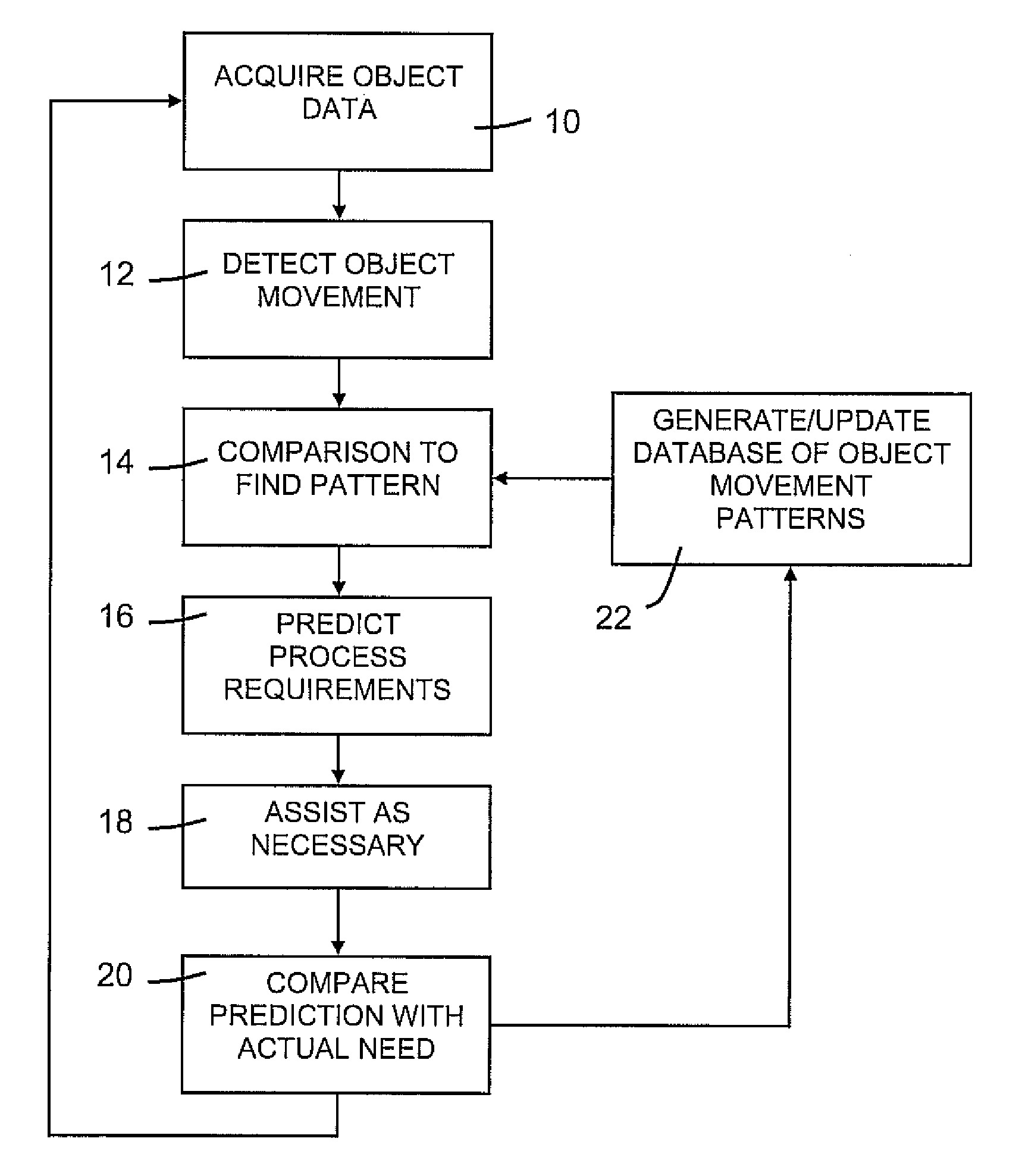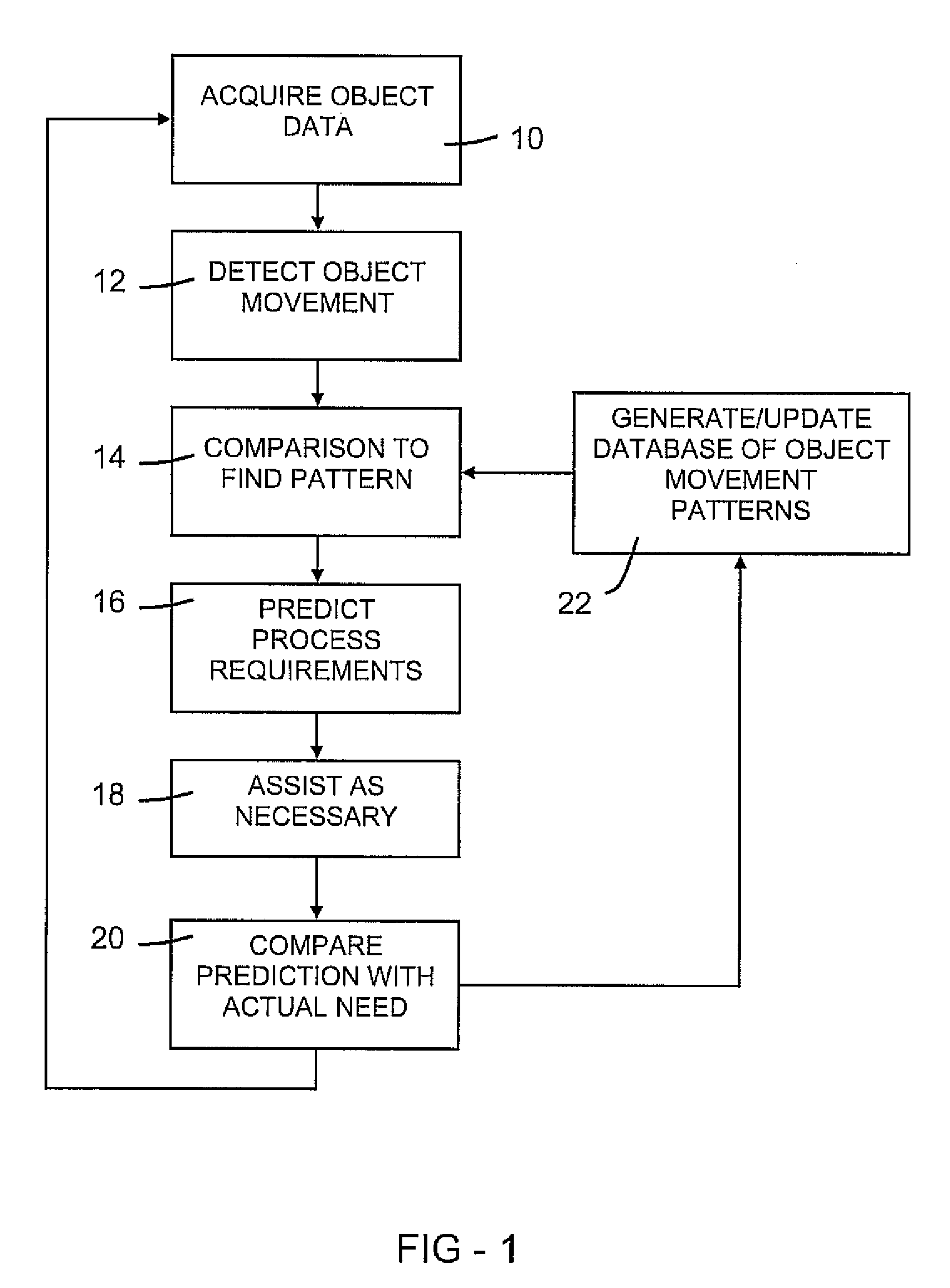Robotic system and method for observing, learning, and supporting human activities
a robot and human activity technology, applied in the field of robots, can solve the problems of difficult identification of how a robot might help, heavy burden on the human, complex interpretation of human actions and gestures, etc., and achieve the effect of improving the performance of other robotic algorithms and increasing their accuracy
- Summary
- Abstract
- Description
- Claims
- Application Information
AI Technical Summary
Benefits of technology
Problems solved by technology
Method used
Image
Examples
Embodiment Construction
[0024]Embodiments of the present invention relate to robotic assistance, in particular to robotic assistance of a human task. For example, a robot may determine a task goal from sensing a location change of objects within the robot environment. Object location changes may be compared with historical data comprising a collection of object location change patterns. Historical data may also be stored in the form of rules relating to particular object location changes, in which a particular pattern of object location changes can be tied to a particular task.
[0025]Task requirements can then be predicted by the robot early within the task, allowing the robot to provide assistance to the human to achieve the task goal.
[0026]Example approaches allow a robot to provide assistance with a task in various environments. For example a robot can assist a human with domestic tasks such as food preparation, cleaning, other household chores and the like. In other examples, the robot may operate in an...
PUM
 Login to View More
Login to View More Abstract
Description
Claims
Application Information
 Login to View More
Login to View More - R&D
- Intellectual Property
- Life Sciences
- Materials
- Tech Scout
- Unparalleled Data Quality
- Higher Quality Content
- 60% Fewer Hallucinations
Browse by: Latest US Patents, China's latest patents, Technical Efficacy Thesaurus, Application Domain, Technology Topic, Popular Technical Reports.
© 2025 PatSnap. All rights reserved.Legal|Privacy policy|Modern Slavery Act Transparency Statement|Sitemap|About US| Contact US: help@patsnap.com



